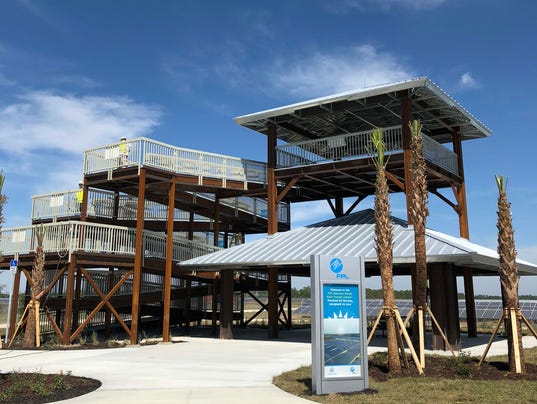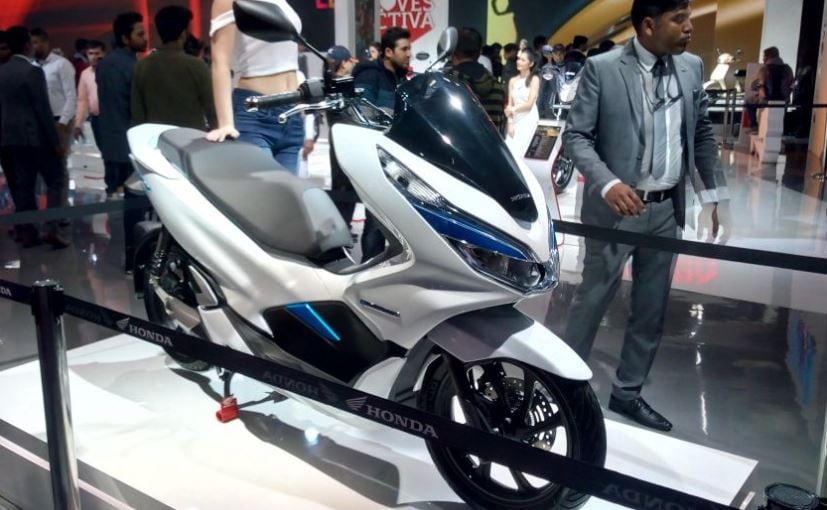 Babcock Ranch, the world’s first solar-powered town on Babcock Ranch Road/State Road 31, is offering tours of the FPL Babcock Ranch Solar Energy Center Saturday mornings through May.
Babcock Ranch, the world’s first solar-powered town on Babcock Ranch Road/State Road 31, is offering tours of the FPL Babcock Ranch Solar Energy Center Saturday mornings through May.
The tours are free, though advance registration is required. Information and registration are available online at www.babcockranch.com/fpl-solar-field-tours.
“Visitors to Babcock Ranch are intrigued by the solar field and are excited to see the vast array of solar panels that power our town,” said Syd Kitson, chairman and CEO of Kitson & Partners, developers of Babcock Ranch. “We want to give everyone an opportunity to learn how solar energy is a key part of our commitment to sustainability at Babcock Ranch.”
Bus transportation is provided for the one-hour tour that departs from the Babcock Ranch Discovery Center at Woodlea Hall. Tour participants travel to a newly constructed, three-story observation tower at the Solar Energy Center, which provides walk-up access via eight ramps. Guests are encouraged to wear comfortable walking shoes. Children ages 12 and up, along with a parent or guardian, are permitted on the tours.
Babcock Ranch donated 440 acres for the solar facility and partnered with FPL to develop the Solar Energy Center, which provides electricity to the grid powering Babcock Ranch and surrounding areas. With 74.5 megawatts of solar capacity from 343,000 solar panels, the Solar Energy Center will provide a net production of clean, renewable energy that exceeds the total amount the town will consume at build out.
Babcock Ranch’s clean energy efforts recently were taken to the next level when FPL created the largest solar-plus-storage system operating in the U.S. today. Each of the 10 large gray steel battery storage units at the Solar Energy Center can store one megawatt of power and discharge for four hours. The new battery storage system ensures a steady output of power even on partly cloudy days.
Within Babcock Ranch, solar panels on the roofs of Founder’s Square commercial buildings are the first of several “micro communities” that will expand FPL’s solar generating capacity at Babcock Ranch as the town grows. Solar trees at Founder’s Square and in neighborhood parks combine technology, functionality and art to provide charging stations for handheld devices.
Babcock Ranch was created by Kitson & Partners with respect for the natural environment and the philosophy that smart growth and sustainability work hand in hand. Half of the town’s 18,000-acre footprint is set aside as greenways, parks and expansive lakes, providing recreation and scenic backdrops for Babcock Ranch’s homes and the Founder’s Square downtown district.
Emphasizing a front-porch lifestyle to nurture a sense of community, Babcock Ranch promotes healthy living through a walkable community plan, 50 miles of planned biking and hiking trails, interconnected lakes for paddling enthusiasts, a calendar of exercise classes, and the Healthy Life Center managed by Lee Health at Founder’s Square scheduled to open this month.
Table & Tap restaurant, Slater’s Goods and Provisions, Square Scoops Coffee & Creamery, Curry Creek Outfitters, and Babcock Neighborhood School welcomed the greater community to Founder’s Square even before the arrival of the town’s first residents in early January. A downtown park offers a lakefront bandshell, boardwalk, covered pavilions, and charging stations for electronics, including cars. An autonomous shuttle provides transportation between homes and Founder’s Square.
Babcock Ranch has eight homebuilders offering more than 50 home designs including twin villas, cottages, town homes, single-family executive, manor and custom homes featuring one- and two-story designs, two to six bedrooms, and 1,400 to 4,761 square feet of living space. Prices range from the low $200,000s to $1 million. Homes are built to Florida Green Building Coalition standards, emphasizing energy and water conservation.





